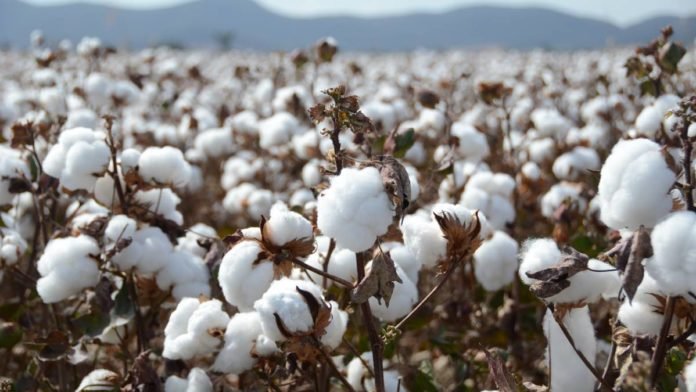Abdul Rauf
The decline in cotton production in Pakistan, alongside a shrinking cultivated area, has escalated into a critical issue that demands urgent attention. Cotton, as a cornerstone of the country’s textile industry, plays a pivotal role in the economy, contributing significantly to exports and employment. However, a troubling trend has emerged in recent years: an increasing number of farmers are diverting their focus from cotton to more lucrative crops such as sugarcane, maize, rice, and sesame. This shift not only threatens the agricultural landscape but also jeopardizes the national economy, amplifying the need for immediate actions to avert further decline.
At the heart of this issue is the absence of a timely and effective support price mechanism for cotton. Currently, the financial uncertainty stemming from delayed pricing announcements leaves farmers vulnerable, prompting many to explore alternative crops that may seem more profitable. To restore confidence in cotton farming, it is essential for the government to ensure prompt announcements regarding support prices. Such measures would provide farmers with the economic reassurance needed to reinvest in cotton cultivation.
Climate change poses another significant obstacle to cotton production. Pakistan has been experiencing rising temperatures, intensified heat waves, and heavy rains, all of which create adverse conditions for cotton farming. In contrast, other crops like sugarcane, maize, and rice exhibit better resilience to these climatic challenges, causing farmers to prioritize their cultivation. To combat the effects of climate change, it’s critical to invest in the development of climate-resilient cotton varieties that can withstand extreme weather conditions and pests.
Additionally, pest infestations have become a major impediment to cotton production. Pests such as whiteflies and pink bollworms inflict severe damage, leading to considerable yield losses. Whiteflies not only harm cotton leaves but also transmit viruses like the leaf curl virus, which further diminishes yields. Similarly, pink bollworms devastate cotton flowers and bolls, negatively impacting both quantity and quality. It is estimated that pests result in a loss of nearly two million bales of cotton each year. To address this pressing issue, the development of genetically resilient cotton varieties and targeted training on modern pest control methods are imperative.
The cotton leaf curl disease, transmitted by whiteflies, poses yet another layer of difficulty for farmers. This disease weakens plants, resulting in reduced yields and compromised quality. Therefore, it is vital to focus on developing virus-resistant seeds that can fend off these diseases and bolster cotton health. Research institutions must allocate efforts and resources towards creating durable seeds that can endure the numerous challenges facing cotton crops.
A significant barrier to progress in cotton production is the inadequate investment in research and development. The failure to pay cotton cess—a critical fund that supports agricultural research—has stifled advancements in modern cotton varieties and farming techniques. Since APTMA (All Pakistan Textile Mills Association) suspended cotton cess payments in 2016, research institutions have grappled with financial limitations, stalling innovation and growth. To revitalize the industry, it is crucial for both government and private sectors to bolster funding for research initiatives and ensure timely cotton cess payments. These actions will facilitate access to improved varieties and modern farming practices, encouraging stability and growth in cotton production.
Market monopolies further complicate the plight of cotton farmers. The power held by major buyers often leads to exploitative practices, such as price manipulation and delayed payments, particularly when production levels rise. In such instances, APTMA frequently reduces prices, benefiting middlemen and processors while disadvantaging farmers. This intermediary structure strips farmers of their rightful compensation, reinforcing the need for governmental oversight to ensure fair pricing and promote competition. Implementing transparent pricing policies and facilitating direct trade opportunities, possibly through digital platforms, can empower farmers, leading to enhanced financial independence and a more robust cotton sector.
Promoting early planting practices could serve as a promising strategy for boosting cotton production in Pakistan. By adopting early planting on a portion of the cultivated land—specifically, 1.5 million acres during the February-March window—produce could potentially rise to around 5 million bales with an average yield of 40 maunds per acre. Furthermore, traditional planting on the remaining area after wheat harvest could yield an additional 6.5 million bales. This strategic shift in planting times can significantly elevate total production beyond 10 million bales, showcasing how minor adjustments can lead to major benefits.
For instance, a farmer with 12 acres could allocate just 3 acres for early cotton planting to enhance yields and secure better pricing opportunities. This approach facilitates improved crop management while taking advantage of favorable climatic conditions, ultimately leading to greater economic stability for farmers. Early planting not only increases the chances of a successful harvest but also allows farmers to take advantage of higher market prices due to the early availability of cotton.
The unequal application of the General Sales Tax (GST) further hinders local cotton production. While the 18% GST on imported cotton has been waived, local producers remain burdened by the same tax rate. This disparity creates an uneven competitive landscape, harming domestic growers’ financial viability. Equalizing GST rates between local production and imports is critical to fostering an environment that supports local farmers, encouraging the growth of the cotton industry.
Achieving equilibrium in GST implementation is essential not only for stabilizing farmers’ economies but also for fostering a robust and self-sufficient cotton industry. When taxation levels favor imported goods over local produce, it invariably diminishes the incentive for farmers, exacerbating the decline in production levels.
To navigate these complex challenges effectively, a collaborative effort involving the government, research institutions, and private stakeholders is essential. By implementing actionable strategies focused on escalating cotton production, uplifting farmers’ livelihoods, and rejuvenating the economy, stakeholders can work in unison to revitalize Pakistan’s cotton sector. The time for decisive action is now—prompt interventions can pave the way for a brighter, sustainable future for this critical industry.















